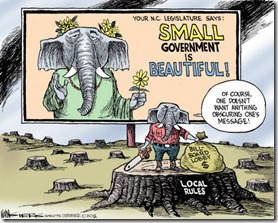“Access to opportunity” is a consumer-behavior paradox that most marketers fail to grasp or choose to ignore. It is the reality that the more access a consumer has to a product or service, the harder it is to get their attention, let alone persuade them to purchase. In fact, the more access they have, the less likely they are to buy.
This may be even truer of business-to-business marketing than it is to business-to-consumer. This behavior pattern wasn’t brought to my attention until I was three quarters of the way through my now-concluded forty-year career in community-destination marketing. Ironically, the dots were connected for me by Louise Stevens, a consultant based in Bozeman, Montana, which is just north of the Yellowstone-Teton nook of Idaho, of which I am a native and where we often sold or purchased livestock, especially horses.
I never worked with Louise, but I was briefly interviewed by her back in the 1990s for an analysis she did for Durham, North Carolina, where I live and in turn she educated me about this paradox. And whenever I bring up the term “access to opportunity” with other marketers or businesses that use marketing I nearly always get a slightly puzzled look followed by “ah ha” which confirms that I obviously wasn't the last one to learn about it!
Many marketers and businesses either still appear to be ignorant or apathetic about this nugget of consumer behavior but anyone involved in community marketing should care deeply unless they want to doom their communities to endless churn. The term “access to opportunity” explains why consumers, whether individuals or businesses, become more likely to pass on purchasing opportunities as the choices within a category of products or services become more plentiful.
This is simply because more access leads to not only a dilution of purchases for that product or service but also an erosion of any sense of urgency to buy at all leaving a consumer feeling that “if not today, there is always tomorrow.” This is why communities that continue to add cultural facilities or events, including and sometimes especially sports facilities, without any regard to supply and demand are doomed to eventually cannibalize what they already have.
In part this behavior also explains why consumers are increasingly tuning out altogether to advertisements placed in newspapers and magazines, but particularly on television, radio and especially on huge outdoor roadside billboards. For the latter this is why the industry is so misguided in its determination to clear-cut football-field-size swaths of trees and other green roadside infrastructure in either/or both directions from every billboard.
Enabled by a seemingly codependent or oblivious legislature, the billboard industry’s tragic disregard for public property not only overrides the wishes of 85% of North Carolina's voters as voiced in scientific public opinion polls but the sacrifice of these natural resources will be for no avail.
It is an immutable fact of consumer behavior that the more they are able to see an outdoor billboard, even one that displays digitally and frantically changing messages every few seconds, the less likely they are to look and when they do, for 99% it will be for less than 3/4ths of a second according to a yet to be released study.
That is less than a third of the time it would minimally take to discern an advertisement according to other studies.
So any business or organization occupying space on a roadside billboard will not only alienate the nearly 8 in 10 consumers who view them as a desecration as well as the nearly 9 in 10 who oppose cutting any more trees to make them visible, but the minuscule fraction who will look at them long enough to discern a message is now even less likely to do so. Ironically even the digital ones are almost impossible to read at all in the brief portion of a second that they are viewed, if at all.
Outdoor billboard companies apparently don't really care about overwhelming public opposition because they know that any detrimental reaction will be to the businesses and organizations that advertise on them. They are also not likely to be forthcoming to potential advertisers with the fact that their message is now even less likely to be seen at all due to “access to opportunity.”
A major factor keeping these huge obsolete outdoor billboards on life-support long enough to desecrate hundreds of thousands of additional publicly-owned roadside trees is the sad fact that most marketers and businesses are only now waking up to the fact that the messages they place and where they place them must be measured as much by the number of consumers they turn off as by the shrinking few they may turn on.
And “access to opportunity” means that any cost-benefit analysis must also take into consideration the fact that fewer and fewer consumers who do view the messages even care.
No comments:
Post a Comment